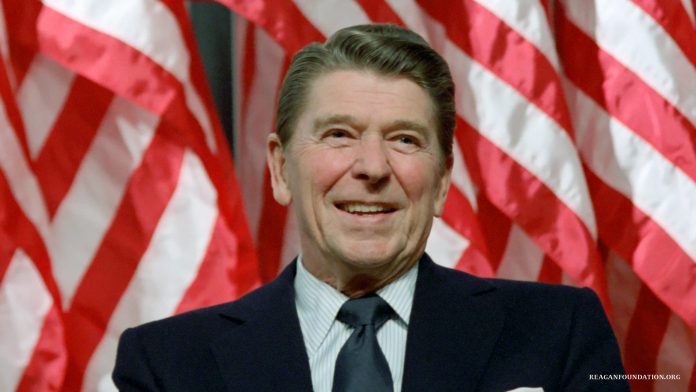
The campaign plane was high above the clouds, and Ronald Reagan was turning red.
It was 1976 and Reagan – he was a candidate then, making his first presidential run – had been eating peanuts and drinking a Coke.
Then he started making choking sounds, a witness, Nancy Reynolds, told The Washington Post.
“His face turned red, and as it got darker and darker, we all froze,” she said.
All except Mike Deaver. The campaign aid pushed Nancy Reagan aside and grabbed the California governor from behind. He bear-hugged Reagan and gave a sharp upward heave just above the politician’s belly button.
On the second thrust, the peanut popped out.
Finally able to breathe, Reagan told Deaver: “I’m sure glad I taught you that darned thing.”
Reagan had taken great pains one day to show the intricacies of the Heimlich maneuver to Deaver, a longtime friend and political aid, according to a review in the Deseret News.
Deaver had balked, according to a quote in the review, because he “was impatient to be spending so much time on a nonpolitical issue.”
But Reagan persisted. If Deaver knew it, Reagan hoped, he might be able to one day save the life of someone choking on food.
Reagan’s newly-cleared windpipe was an indication of how thoroughly Henry Heimlich’s maneuver had been drilled into the public consciousness.
Heimlich died on Dec. 17, 42 years after the Cincinnati thoracic surgeon started spreading the word about his new means of stopping people from choking on food.
The “bearhug” maneuver has saved an estimated 10,000 people, according to his obituary in The Washington Post.
It was his most enduring contribution in a career that spanned seven decades.
Initially, it was met with skepticism. It took a dozen years for the American Red Cross and the American Heart Association to recognize that the technique was useful to stop people from choking, said Sindya H. Bhanoo.
Other ideas had faced similar skepticism – and wilted under the glare of critics. Early in his medical career, Heimlich claimed to devise a way to use a section of a patient’s stomach to replace a damaged esophagus and introduced a simple valve to drain severe chest wounds. Both innovations were variations of existing procedures.
In the 1980s he began experimenting with malariotherapy, believing that the high fevers caused by malaria could cure other infections, such as HIV. The theory faced strong opposition in the United States, so he conducted clinical trials in Mexico and China. But the project was shut down without success and the research tarnished Heimlich’s reputation.
Through it all, he touted the benefits of the Heimlich maneuver during television appearances and speaking engagements, often picking attractive women from the audience to help him demonstrate.
The word spread, and choking people survived.
Cher was saved when she started choking on a vitamin pill at a Broadway rehearsal in 1982. Simon Cowell was rescued in 2014 from an accidentally swallowed mint. Former New York mayor Ed Koch was saved in 1981 after choking at a Chinatown restaurant. Shortly after, he made Heimlich maneuver posters mandatory in city restaurants.
Heimlich even used his maneuver at a nursing home where he lived before he died, saving an 87-year-old choking victim.
“I ordered a hamburger, and the next thing I know, I could not breathe I was choking so hard,” the choking woman, Patty Ris, told the New York Times.
“I saw her face was all stiffened up and her skin was turning dark and she could not speak,” Heimlich told the Times. “Of all things, I knew she was choking.”
By the time staffers reached Ris, the doctor had already assumed his position behind her and initiated the maneuver.
Heimlich dedicated his Twitter feed to similar stories about people who had saved lives using his technique.
But that came well after Reagan was saved on an airplane above the United States.
After catching his breath, Reagan, of course, went on to become president. He appointed Deaver as deputy chief of staff, although it’s unclear whether that had anything to do with the man saving him from death by peanut.
Those few lifesaving seconds of action on the plane became forever entwined in Deaver’s story.
When he died in 2007 of pancreatic cancer, the Post’s obituary mentioned his time as deputy chief of staff, his perjury conviction after lying about his lobbying firm and his philanthropy.
But there, tucked in the sixth paragraph: “Deaver once even saved the future president’s life.”
(c) 2016, The Washington Post · Cleve R. Wootson Jr.
{Matzav.com}











